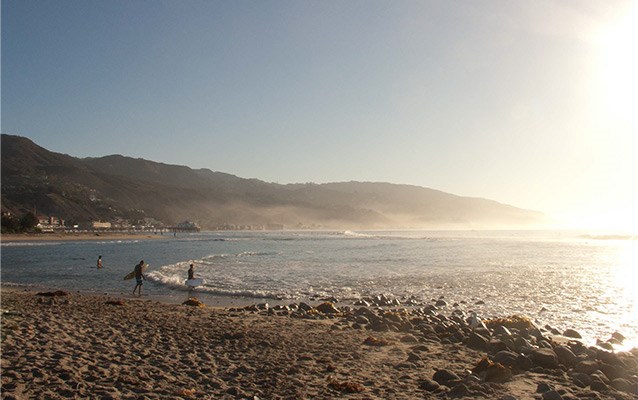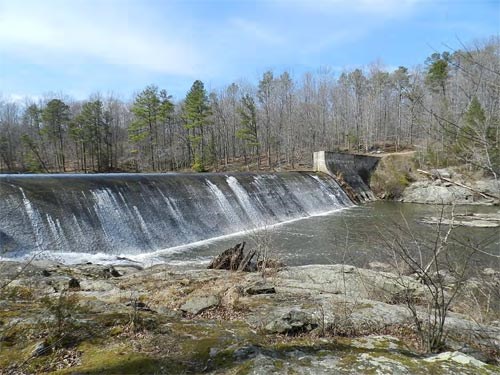The National Register of Historic Places is the official list of the Nation's historic places worthy of preservation. Authorized by the National Historic Preservation Act of 1966, the National Park Service's National Register of Historic Places is part of a national program to coordinate and support public and private efforts to identify, evaluate, and protect America's historic and archeological resources.
The National Register of Historic Places is pleased to promote awareness of and appreciation for Great Outdoors Month. As part of the celebration, this site showcases historic properties listed in the National Register commemorating the events and people that help illustrate America's commitment to protecting our environment. So get outside and experience our country.
The National Register of Historic Places is pleased to promote awareness of and appreciation for Great Outdoors Month. As part of the celebration, this site showcases historic properties listed in the National Register commemorating the events and people that help illustrate America's commitment to protecting our environment. So get outside and experience our country.

Photograph courtesy of California State Historic Preservation Office
Highlighted Properties:
Malibu Historic District, Malibu, CaliforniaMalibu Historic District is significant in the area of Recreation/Entertainment for its contribution to the growth and development of surfing from 1945 to 1959. Malibu played an important role in the development of surfboard design and production, in addition to surfing style. The long rides offered by Malibu’s waves placed it at the center of the evolution of surfing style and technology, as well as fueling the cultural evolution of what surfers looked like, in and out of the water.
Reading Country Club, Execter Township, Pennsylvania
The Reading Country Club golf course in Exeter Township, Pennsylvania is an important example of an Alexander Findlay-designed golf course, and is significant for Landscape Architecture. Findlay (1865-1942), emigrated from his native Scotland to Omaha, Nebraska, in the mid-1880s. He was an accomplished golfer and is credited with shooting the sport’s first score of 72 in competition, this occurring in 1886 at the Royal Montrose Golf Club, Scotland. In 1887, he built a 6-hole golf course west of Omaha, considered the first golf course west of the Mississippi River. From there, he became one of America’s pioneers of the game.

Photograph courtesy of Virginia State Historic Preservation Office
Previously Highlighted Properties:
Pocahontas State Park Historic District, Chesterfield, VirginiaPocahontas State Park, originally known as Swift Creek Recreational Demonstration Area (RDA), was a project of the New Deal-era Civilian Conservation Corps (CCC). In 1946, the NPS donated the park to Virginia State Parks, to be run jointly by the state and the Virginia Department of Forestry. Renamed Pocahontas State Park and Pocahontas State Forest, the area became the state's largest park. In 1989, the park implemented a new master plan that included expansion of the park facilities to attract and accommodate the growing numbers of residents in the City of Richmond and Chesterfield County. Pocahontas State Park is important in Virginia as the only state park specifically designed for use by large groups such as groups from churches, civic organizations, or schools, instead of single families or individuals.
South Park City Museum, Fairplay, Colorado
The South Park City Museum is an intact mid-twentieth century outdoor museum interpreting a frontier mining community, significant for its association with Park County tourism, the Rush to the Rockies, and early historic preservation efforts in Park County
Fountain of the Pioneers, Kalamazoo, Michigan
The Fountain of the Pioneers complex is nationally significant as a rare, if not the only, example of American public sculpture whose primary figurative sculptural elements directly or indirectly reference the United States government's nineteenth century Indian Removal activity, and the following commonly held European-American belief and federal policies supporting Indian assimilation. It is also significant for its contribution to the history of public art criticism through its sustained period of interpretive conversation and debate about its meaning by the artist, his colleagues, and the public, beginning before the work was completed and continuing to today.
Brandywine Park, New Castle County, Delaware
Laid out according to the landscape style advocated by the famous nineteenth-century landscape architect, Frederick Law Olmsted, Brandywine Park pays tribute to the natural beauty of the Brandywine River. As the first city park established in Wilmington, Brandywine Park also fulfilled the need for public recreational space within a larger urban environment. The east coast of the United States was beginning to feel the loss of its wilderness, and its cities were crowded with immigrants, many of whom had never known the wealth of the American natural landscape.
Glacier National Park Tourist Trails Historic District, Glacier County, Montana
The 163 miles of trail crisscross the Continental Divide, access the park’s most publicized scenic vistas, and links visitor centers at Two Medicine, Cut Bank, St. Mary, Many Glacier, Goathaunt/Waterton, and Lake McDonald.
Rabideau Civilian Conservation Corps (CCC) Camp, Beltrami County, Minnesota
The Rabideau Camp is among the most important properties in the United States in which the history of the CCC and the New Deal can be experienced and interpreted.
Learn More:
Department of the Interior: Great Outdoors MonthVisit a National Park
Visit a National Heritage Area
Visit a Civil War battlefield or learn more about the Civil War
Teaching with Historic Places Great Outdoors Month lesson plans
Take a tour of a historic area with the help of our online travel itineraries
Last updated: April 23, 2021
